What is Klinger Oscillator ?
Stephen Klinger created the Klinger oscillator to identify the money flow's long-term trend while maintaining its sensitivity to pick up on brief variations. The indicator creates an oscillator by comparing the volume passing through securities with changes in the price of the security. The difference between two moving averages that are dependent on factors other than price is displayed by the Klinger oscillator. Indicators with divergence are watched by traders for signs of impending market reversals. To give more trading signals, a signal line may be added, much as with other oscillators.
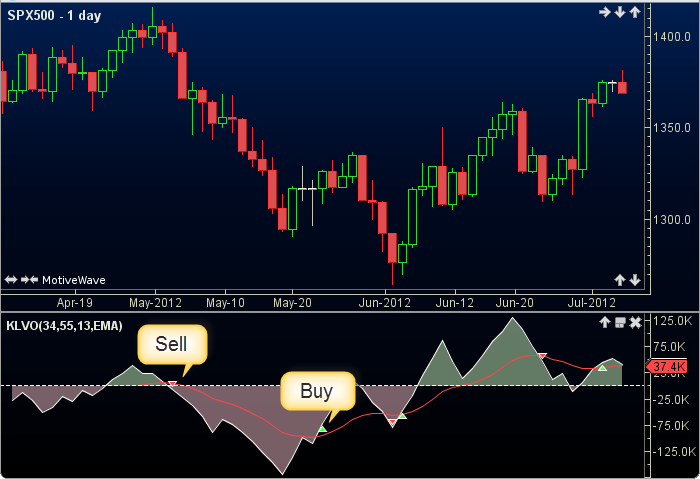
To verify trading signals, traders will employ instruments like moving averages, trendlines, and other indicators. Additionally, traders may confirm a breakthrough or collapse by using the oscillator in combination with chart patterns like price channels or triangles. It is recommended to utilize the indicator in conjunction with these other technical trading techniques because crossovers and divergences happen often.
Klinger Oscillator Formuala
KO=34 Period EMA of VF−55 Period EMA of VF
KO = Klinger Oscillator
VF = Volume Force
Volume Force =V×[2×((dm/cm)−1)]×T×100
V = Volume
T = Trend
Trend=+1 if (H+L+C)>(H −1 +L −1 + Cv −1 )
Trend=−1 if Above is < or =
H = High
L = Low
C = Close
dm = H - L
Ascertainment of Klinger Oscillator
EMA = (C×A) + (E×B)
Where
C = Current period’s VF
A = 2/(X+1), where X is the moving average
E = Prior period's EMA
B = 1 - A
Price Direction Interpretations
The Klinger Oscillator is based on the concept of force volume, which takes into consideration temperature (based on if/then statements and many inputs), volume, and trend (positive or negative). Calculating this oscillator may be rather complicated. The oscillator is constructed using this data by comparing the two exponential moving averages of force volume over various time intervals (usually 34 and 55). The purpose of the illustration is to demonstrate how the volume passing through the securities affects both the short- and long-term price direction.
The Single Line
Usually utilized to initiate buy or sell signals in the market, a 13-period moving average, sometimes called a signal line, is employed.
The Uptrend
An asset or security is in an uptrend when it is above its 100-period moving average and the oscillator is above zero, or heading in that direction. When the oscillator rises over the signal line from below, traders and investors may be more likely to buy. It is noteworthy that even Stephen Klinger discovered that the best times to enter a long position were during an upswing in a company, when the stock fell down below zero and then rose above the signal line once more. This frequently indicates a decline in pricing. Remember this the next time you use the Klinger oscillator indicator to analyze the markets.
The Downtrend
In a downtrending asset or security, traders might think about selling or short selling if the Klinger oscillator goes below the upper signal line. It is noteworthy that Klinger believed this to be particularly significant when the indicator spiked above zero, deviating from its typical patterns. This departure from zero frequently indicates an increase in pricing.
How to use Klinger Oscillator Unique ?
The Klinger Oscillator is unique because it combines both moving averages and volume. The Exponential Moving Average (EMA) places weight on recent prices, which provides signals in real-time and helps traders predict if the price will move up or down.
The oscillator is based on two EMAs: The 34-period EMA and the 55-period EMA. If we use it on the daily chart, it will calculate average prices for 34 days and 55 days. This gives us a better perspective on the current average compared to the historic average. Moreover, traders don’t have to manually add the volume indicator to see how volume correlates to the price because this indicator calculates it for them.
STEP 1 Go to Tradingview
STEP 2
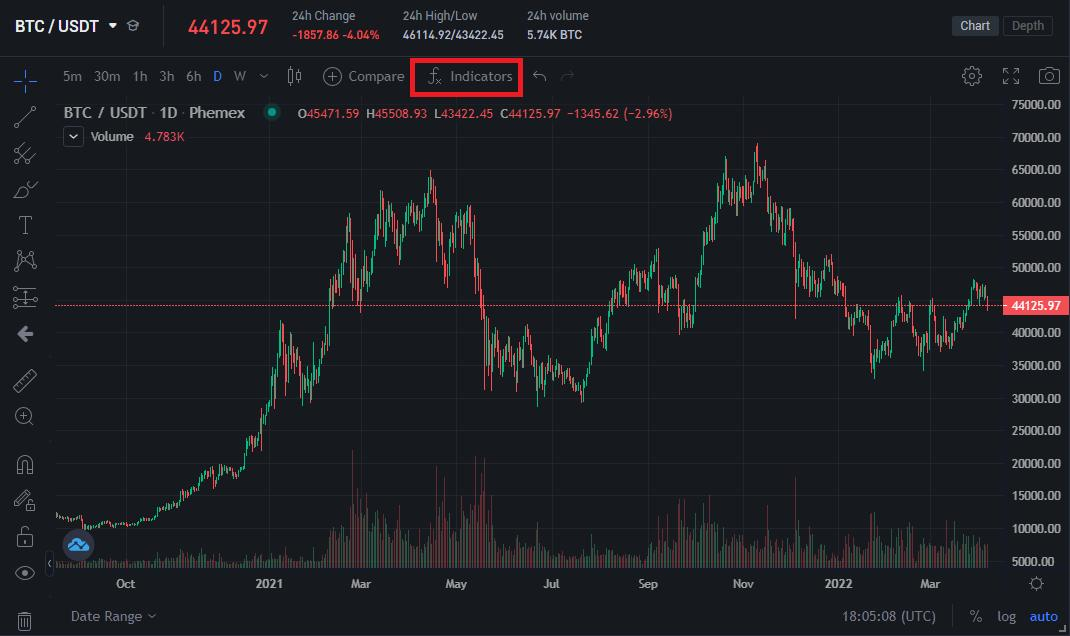
The Bitcoin daily chart with price-performance for the last two years.
Press on “Indicators” at the top (highlighted above) and search for “Klinger Oscillator”
STEP 3
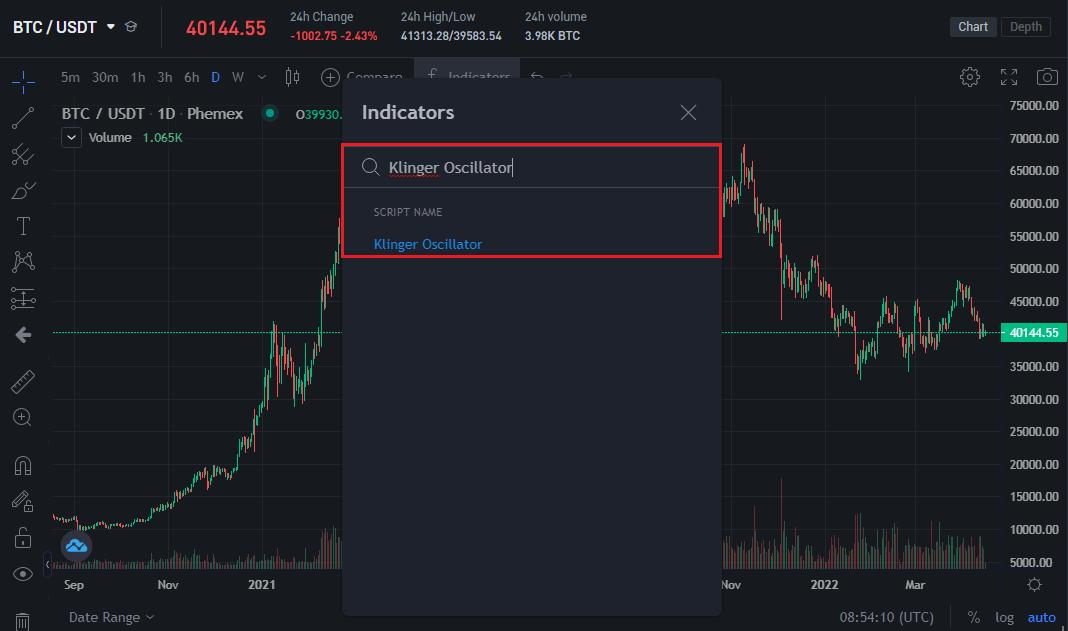
Left-click on the oscillator name and it will automatically load beneath the Bitcoin chart:
STEP 4
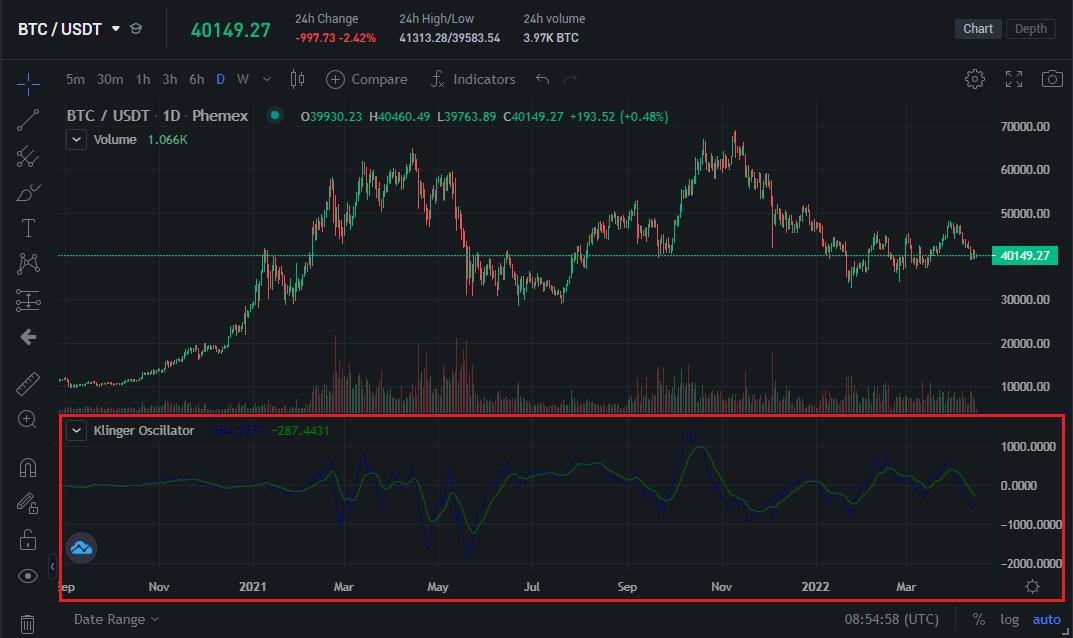
Klinger (blue) and Signal (green) on the positive/negative oscillator line.
STEP 5
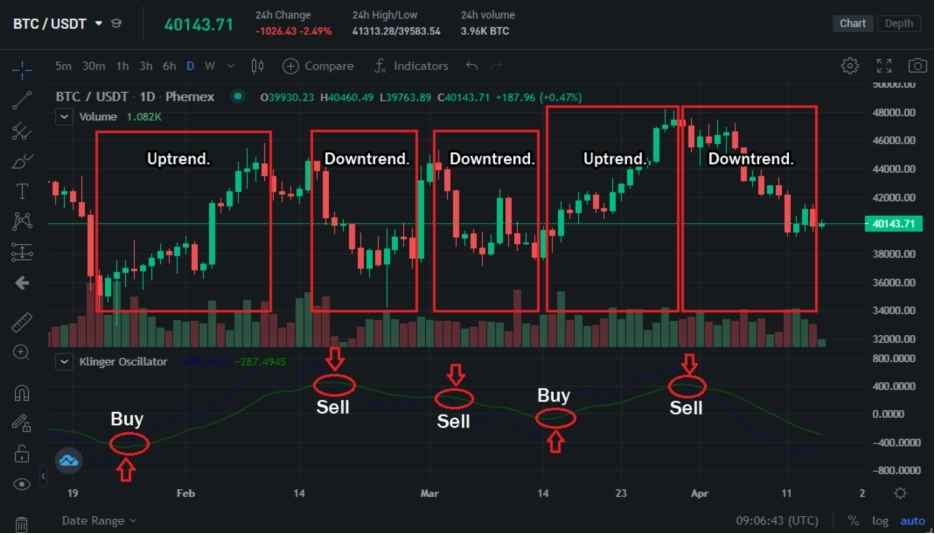
At the present moment, the lines are deviated which indicates there’s no clear direction for the future price. Once those two lines cross, we can open a long or short trade accordingly. Note that the indicator can send mixed signals:
STEP 6
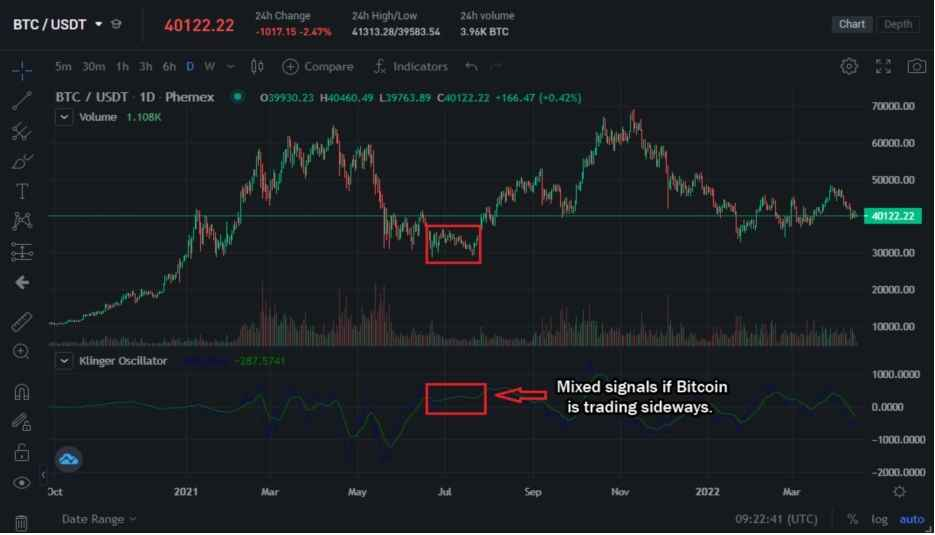
The best Klinger oscillator strategy is to trade based on a crossover between the Klinger line (blue) and the signal line (green). The same strategy applies for long-term and short-term trading.
Related Articles